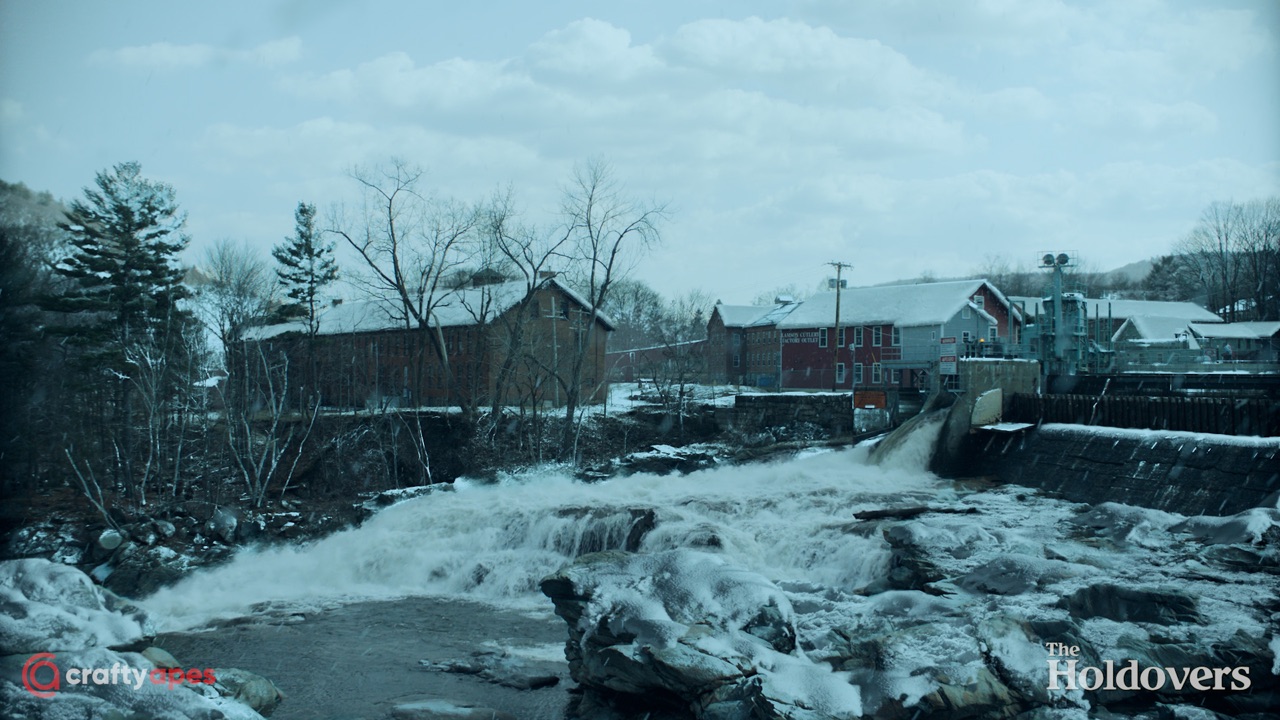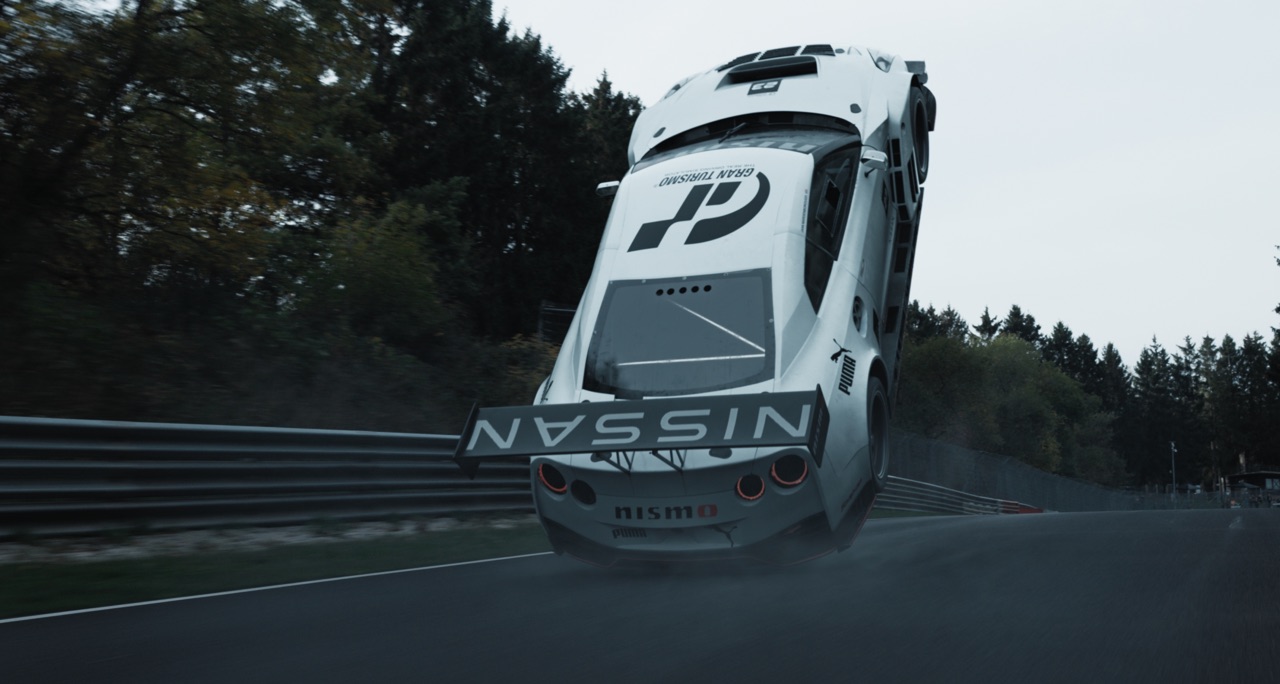See how Crafty Apes made snowy landscrapes, street scenes and more on Alexander Payne’s ‘The Holdovers’.
Sometimes you might set out to film snowy conditions with just the right amount of real snow at your location. Sometimes you might need to add fake practical effects snow. And sometimes you need to add it digitally.
It was a little of ‘all of the above’ for director Alexander Payne’s The Holdovers, the film set in a wintery New England 1970. Ultimately, visual effects studio Crafty Apes would bring a consistent level of winterization to the final film, largely matte painting and compositing.
On-set visual effects supervisor Nico Del Giudice from Crafty Apes guides befores & afters through the process.
Start first with part of Crafty’s breakdown reel.

b&a: On The Holdovers, what were the visual effects requirements? What were you tasked with?
Nico Del Giudice: A lot of the early discussions in tech scouts and in pre-pro was about the snow and just hoping that we would get practical snow to fall in the Boston, Massachusetts area and the surrounding area. We actually hoped that a lot more of it would be practical.
Another surprisingly large part of the work was monitor comps. They can be perceived as pretty straightforward, but with a film that’s classic and with a visionary like Alexander, you really want to capture the vibe in the way that those actually looked at the time. So a lot more goes into monitor comps than many would think.
Then there were tears and some snot enhancements that we did to the boy who was crying in the bed, and some prosthetic enhancements when Angus dislocated his shoulder.
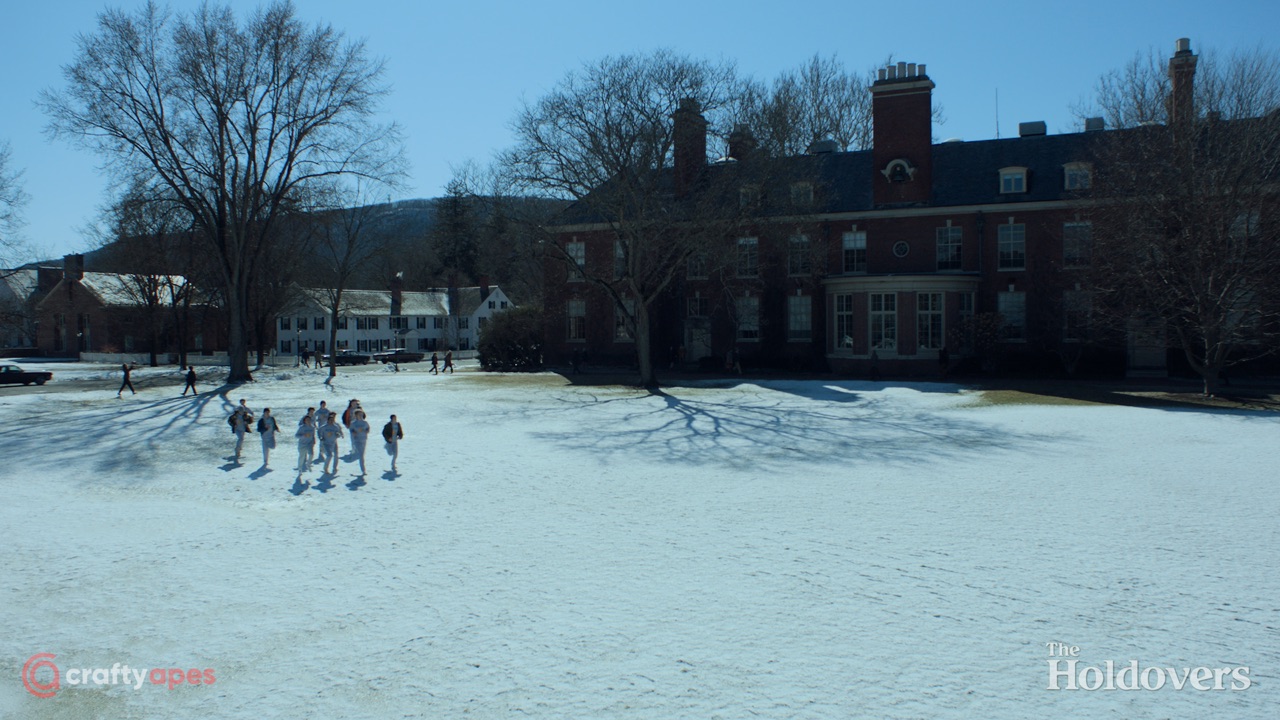

b&a: It is always interesting when a production has to try and either shoot in the wrong season or even during the right season, but doesn’t get the weather they’re asking for. What was the plan here? You mentioned you were hoping for real snow, but was there also an attempt to do some fake practical effects snow on the set as well?
Nico Del Giudice: Yes, there was. A storm had come in at the beginning of production and then the snow had melted off. There were some shots where a snow blanket was attempted, which is great for any light casting onto actors, it’s a great interactive light, but we generally steered away from it. And there were practical SFX guys on set throwing snow and helping out in that fashion, but beyond the immediate foregrounds and midground, there wasn’t more done and we needed to add that in VFX.
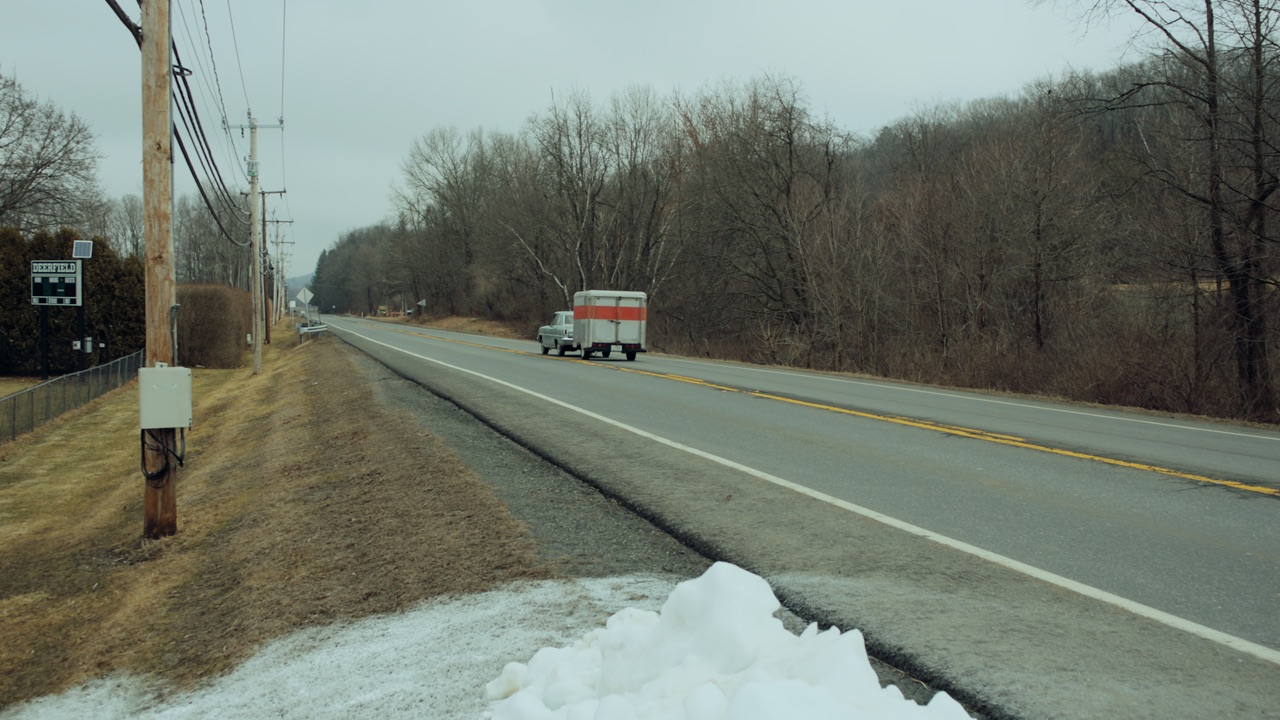
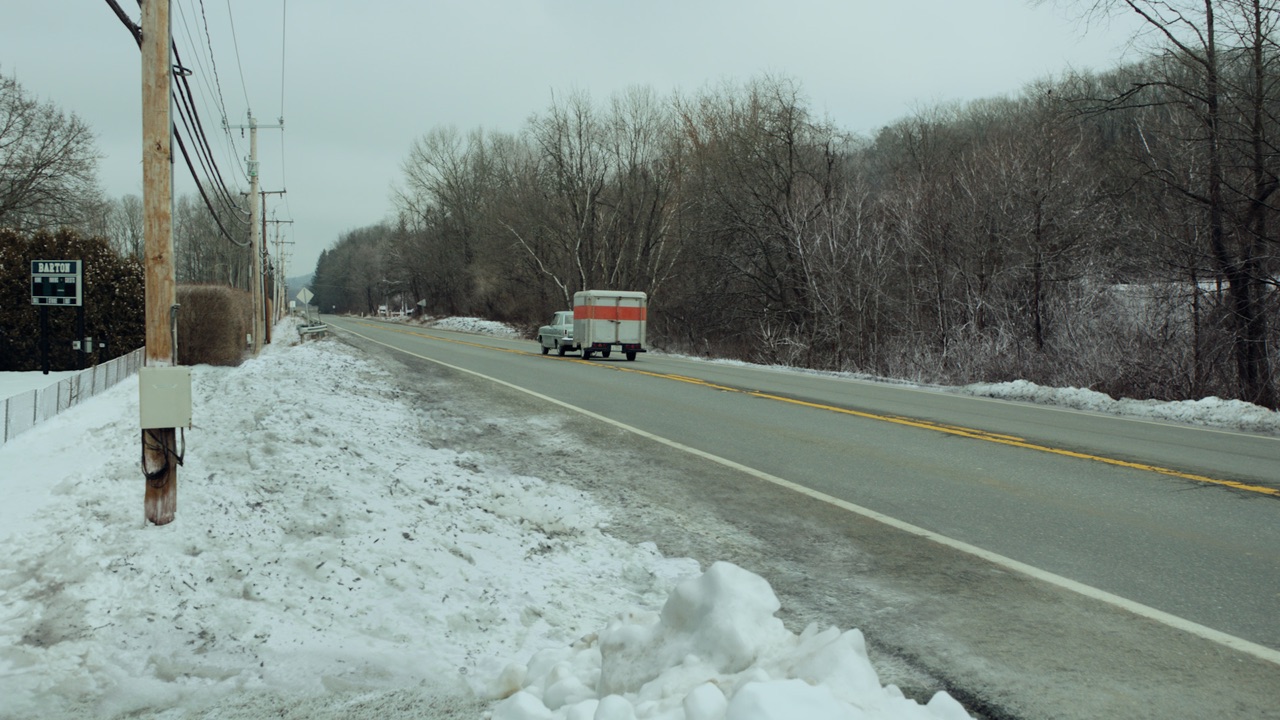
b&a: I’m often covering films that have elaborate creatures or environments, and sometimes, but not all the time on those big films, you get an opportunity to do a lot of on-set surveying and data measurement and whatnot in order to do the post-production work. Was that the case here? Was there time? What sort of things could you do, knowing that you’d be adding snow later?
Nico Del Giudice: Well, I wish I could say that we were taking tons of HDRs and taking full LIDAR scans of these places, but we weren’t always able to. Fortunately for this, we have a really outstanding matte painting team at Crafty. They would set up a still frame approach, which worked with Alexander’s style of shooting, which is more so lock-offs, pans and tilts, 2D nodal type of stuff as opposed to 3D moves.
There were a couple of challenging shots where Paul was driving. We had to make single frames and stitch them together for driving snow shots. But as far as LIDAR scans, as far as set measurements, thank God we have Google Maps these days, because you can do a top down view and survey that stuff, and there were a lot of outdoor locations.
It’s pretty impressive how the matte painting team and our visual effects supervisor, Andy Chang, put all these pieces together to come up with the final look. Brandon Kachel leads the matte painting team at Crafty Apes. As I said, fortunately there was a lot of pan and tilt, so what we’d do is make a still frame with overscan, and that let us make a small move in comp.

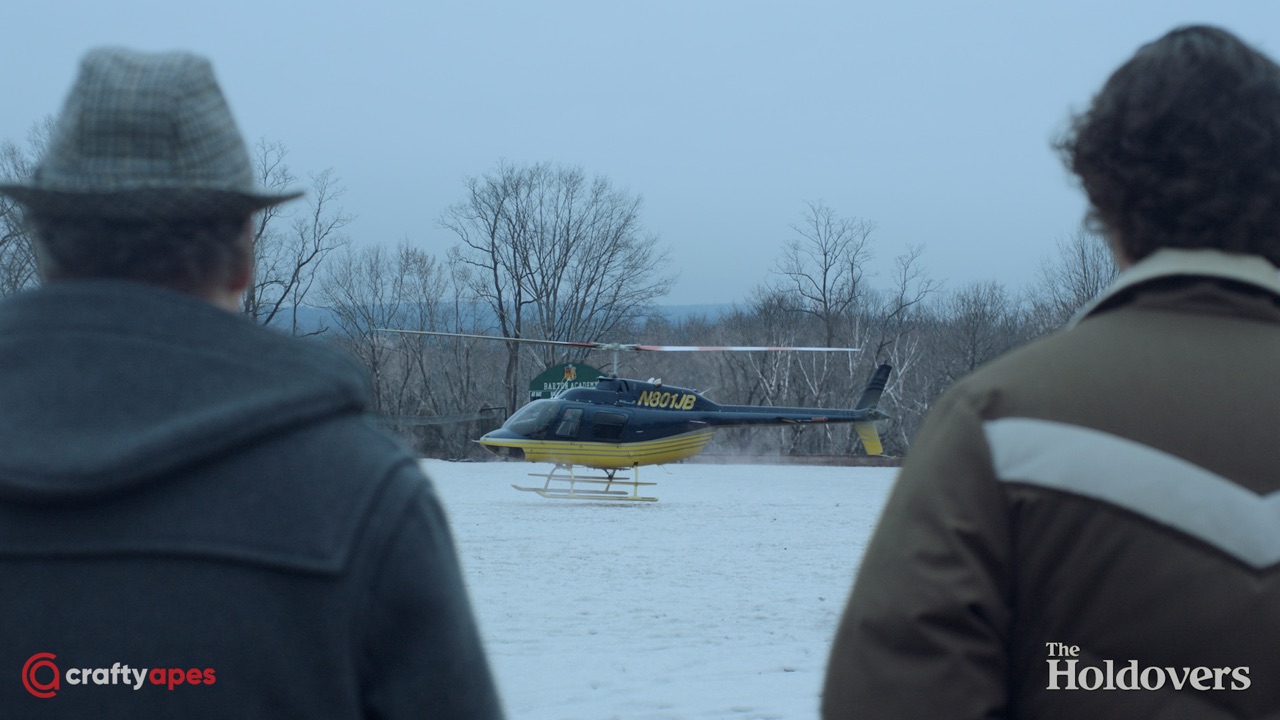
b&a: What plate preparation could your team then do, in terms of tracking, matchmoving and just getting it ready to do some of this matte painting and comp work?
Nico Del Giudice: Crafty has a pretty awesome tracking and also roto team and it’s awesome just to say, ‘Hey, can you guys track this?’ Given that it’s a whole department that we have, it’s a strength that we play to. Tracks would then be exported and sent to our comp’ers. But then, once tracking is done, and once roto is carried out, it’s all about plugging in the matte painting, making sure that everything is integrated color-wise, and that there’s consistency across the board for however many hundred shots.
There was a lot of QC done by Andy Chang in reviews with Alexander. The director has a very specific eye. It’s one that I really appreciate. Some directors want to be shown things as opposed to them telling you what they want to see. Alexander is the type of person that has that vision that he knows what he wants, he can communicate that wellI. It was a relief to be working with somebody who’s a visionary and has that type of mindset to tell you exactly what they want.
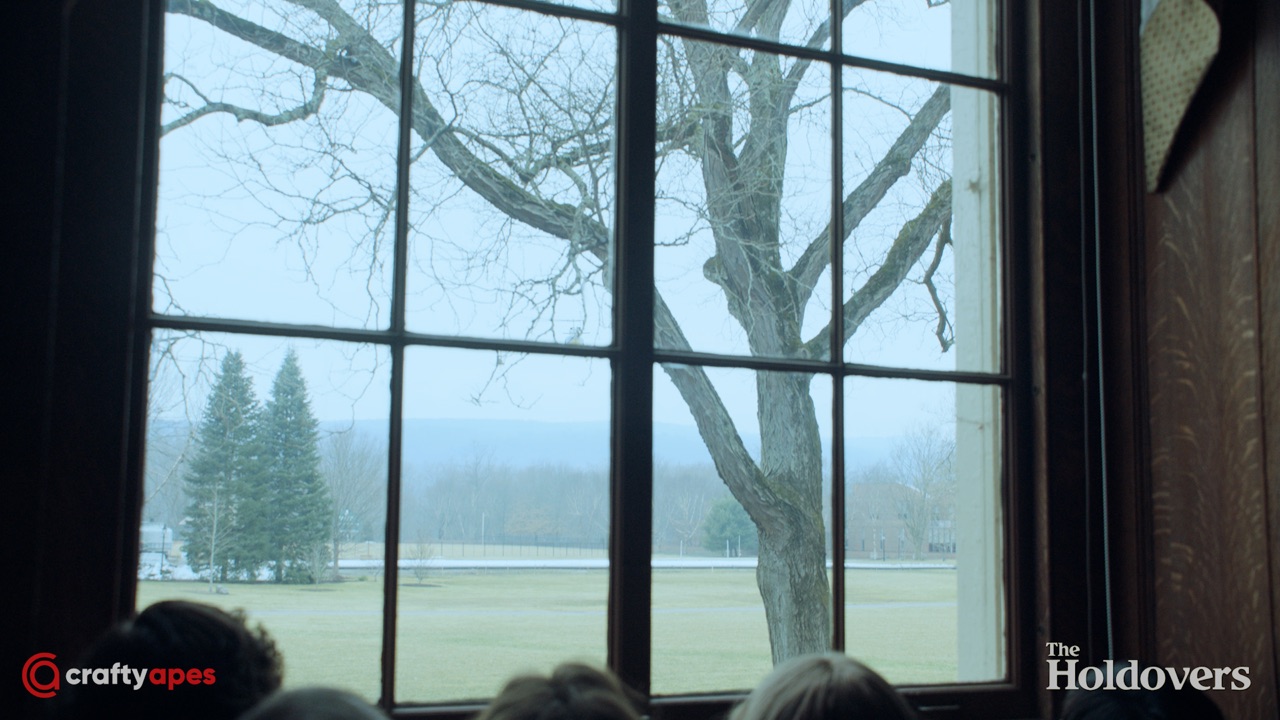

b&a: For any given shot where you needed to take the plate and add snow and add winterization, how did you communicate with Alexander about what would be in the final frame, in the first initial stage?
Nico Del Giudice: As far as the tech scouts in production, that gave us an idea of how much spread he would want to have as far as snow coverage was concerned. The idea was to really have a winterized Boston, Massachusetts, New England-style. It wasn’t necessarily like a patch of here, a patch there. Alexander really wanted to buy into the way that New England looks in the winter.
I’m originally from there. Unfortunately there isn’t as much snow as there used to be, but we were really buying into that winterized charm. So from the get-go, I always had the feeling there was going to be a large coverage of snow.
I remember going to some of these first locations like the school lawn and realizing there was a lot we had to cover. There’s a lot of dialogue. There’s a lot of people crossing the frame, and that means fine hairs. I would think, ‘Hopefully, people are wearing hats!’ That can help us with flyaways and not having to do as much roto. But at the end of the day, we were committing to a lot of coverage and just checking those weather apps and just praying that there would be more snow, more snow.

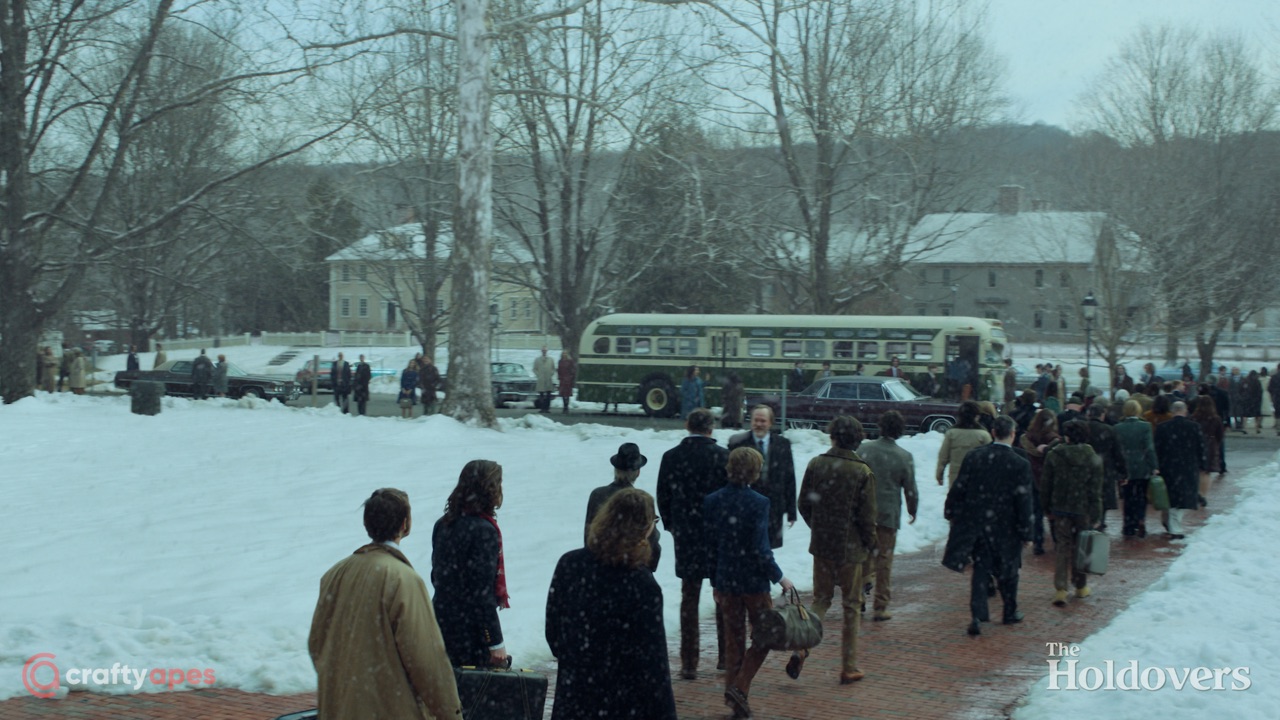
b&a: What was the trickiest snow shot to do?
Nico Del Giudice: Well, there was a location that we had scouted. It was when one of the boys go down to the river and one of their gloves gets thrown into the river by the punk kids. For that, we had had a conversation of, ‘Are they going to be walking through the woods with no practical snow there? Are they going to be kicking up snow?’ So, originally that was going to be very tricky to deal with feet interacting with the ground, but luckily the location changed on that one.
There’s a number of driving shots of Paul Giamatti in the car, where there’s a lot of roto needed in the foreground since we’re shooting through the windshield. We’d pick one frame every 24 frames, creating a matte painting, and then stitching them together. Fortunately, that falls off into defocus, which is a blessing.

